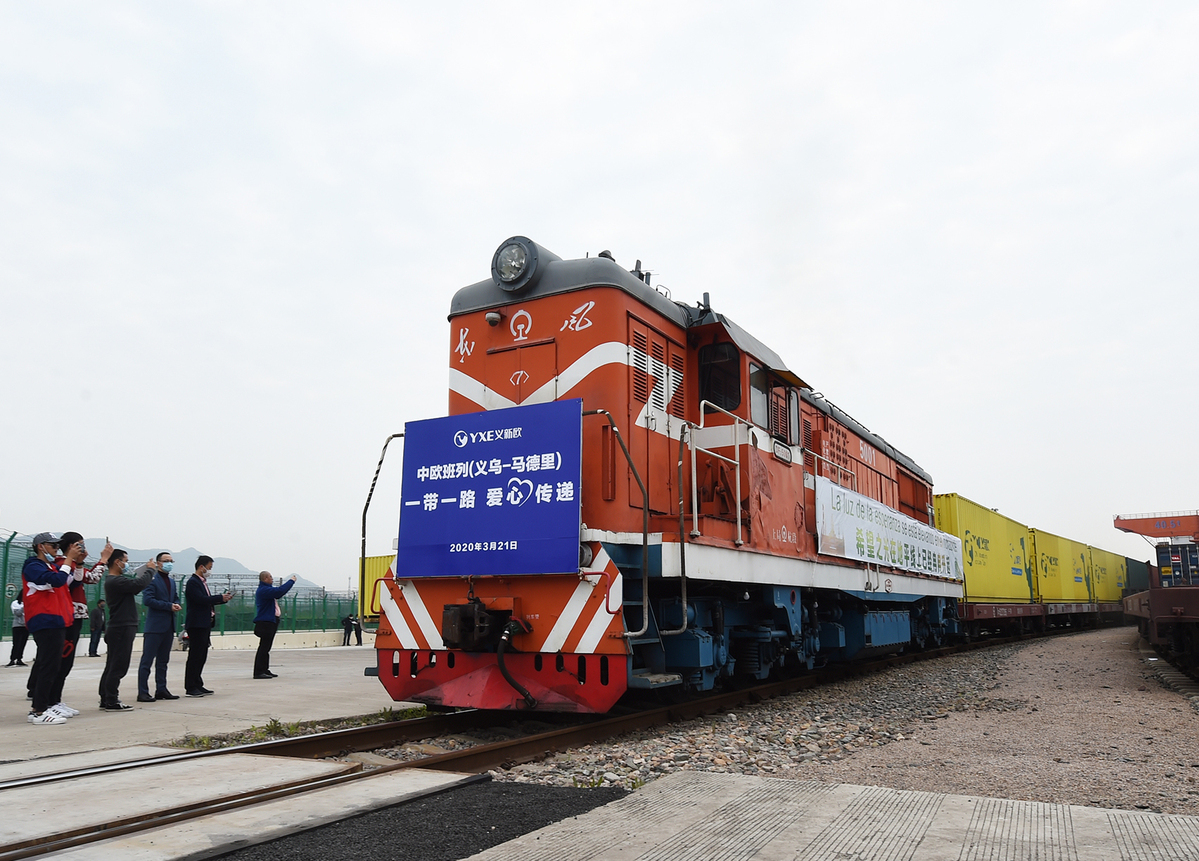6% should still be country's GDP growth target


Though the strong containment measures taken by China to combat the novel coronavirus outbreak have achieved tangible results, fresh cases outside the country have been escalating and there is still very little information about the disease development.
It has also been hard to quantify the overall impact of the epidemic due to the uncertainty of its severity and duration. Even more harder to predict is the overall impact on the economy. No wonder that the full year economic growth forecasts of various institutions are all pointing south, with China figuring prominently in their assumptions.
Over the last few years, China has been the main growth engine of the world economy, and any substantial slowdown in the country would send a chill globally. One example is the overly pessimistic response to China's 2019 GDP growth rate of 6.1 percent. Although it was the lowest reading since 1990, to remain above 6 percent while in the process of the economic restructuring is definitely a significant achievement for the world's second-largest economy.
Given the triple whammy effect of the economic restructuring, the Sino-US trade tension and the public health emergency, the projection for China's 2020 GDP growth is deeply immersed in pessimism. Many believe it is realistic to set the bar to below 6 percent for this year, or even halve it to around 3 percent for it to be acceptable.
Such a belief has been further reinforced by the disappointing economic data for the first two months of this year. Retail sales of consumer goods fell by 20.5 percent on a yearly basis, while the industrial value-added declined by 13.5 percent. However, there is still enough rationale to attest to the assumption that 6 percent should be the targeted GDP growth rate.
From a global perspective, China accounted for roughly 34 percent of the incremental global GDP from 2009 to 2018, or the biggest proportion, according to the International Monetary Fund. Even in 2019, with its 6.1 percent growth rate, China accounted for over 30 percent of the global economic growth. Hence, maintaining a sound growth speed in China would help stabilize the global economy that is currently mired in the deflation and the pandemic.
Further coupling of China's supply chains with the global system will enable China's deeper involvement and participation and thus can better mitigate recession risks. China-made products and China-built infrastructure with cheaper costs and higher efficiencies will steadily fill the gap between potential growth and the realized one, and reinvigorate consumption rapidly after the epidemic shocks.
From a domestic perspective, transforming China's economy from an export-oriented and investment-led model to a technology-and-innovation-driven one needs certain level of growth to prop up the giant sailing boat. The well-established manufacturing sector acts like a cash cow to keep the underlying economy going, and the upgrading of the economic model can't be fulfilled under the condition of a dramatic loss of speed. The growth momentum should be maintained to maintain the state of normalcy.
In fact, the influence of an epidemic or even a pandemic on GDP growth is at least mixed if the 2003 SARS outbreak can be of any reference. The 2003 GDP figures turned out to be 10 percent in spite of the SARS damage, which was higher than the 9.1 percent in 2002 and was about the same as the 10.1 percent in 2004.
The real driver for growth would be the demand derived from exports, investment and consumption, and the strong consumption rebound after the epidemic. A V-shaped recovery in the present case may sound a tad overoptimistic, but given the size of the economy, even a moderate bounce-back would still bring China close to its goal of 6 percent growth.
Moreover, the target of 6 percent has much more to do with the stabilized expectations, and it is the expectation that works as an indispensable element of the modern economy. In practice, the stable expectation of the economy has tremendous correlation with employment, capital expenditure investment, consumption and social wellness, in particular after an epidemic outbreak.
Without the trust derived from a stable expectation of the economy, how would the general public willingly spend on the future earning capability with confidence? The supply-side structural measures are directly linked to demand, and demand is hugely influenced by expectations. Hence, the firm commitment to the 6 percent growth rate can surely reinforce expectations, which is extremely needed at this critical juncture. This is not psychology, but behavioral economics.
Fortunately, China has abundant policy measures in its toolkit to pursue the GDP growth target. Fiscal measures include tax reductions, special bond issuances and designated expenditure on the novel coronavirus treatment and post-epidemic recovery. It would also include monetary measures like reducing commercial banks' reserve ratio and special central bank lending and interest rate cuts.
Since market economy has been the norm in China, the government as one of the market participants should not be hesitant to stimulate the economy as and when required. A market economy cannot function without a government and there would be no exceptions to the rule during the ongoing epidemic-prevention period.
Liu Jun is a member of the China Finance 40 Forum. The opinions expressed in this article are entirely the author's own.





































